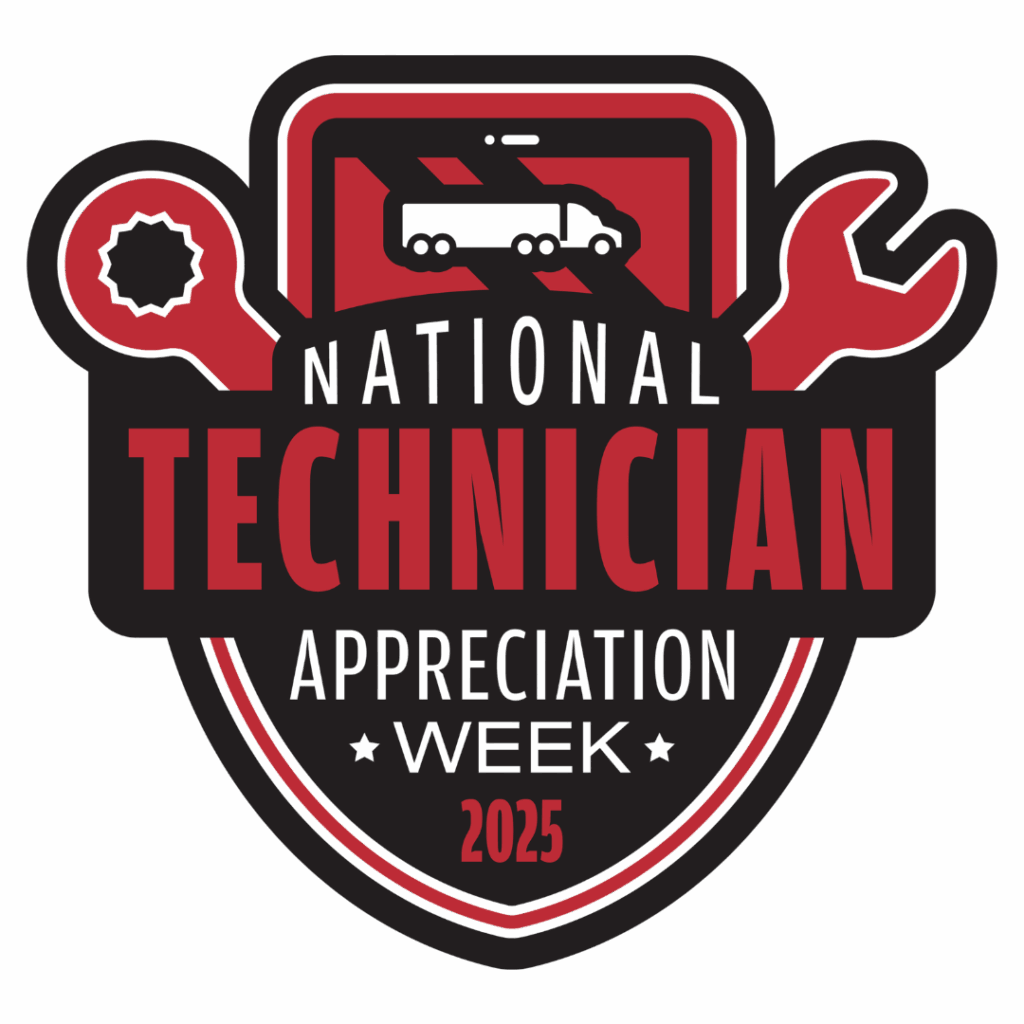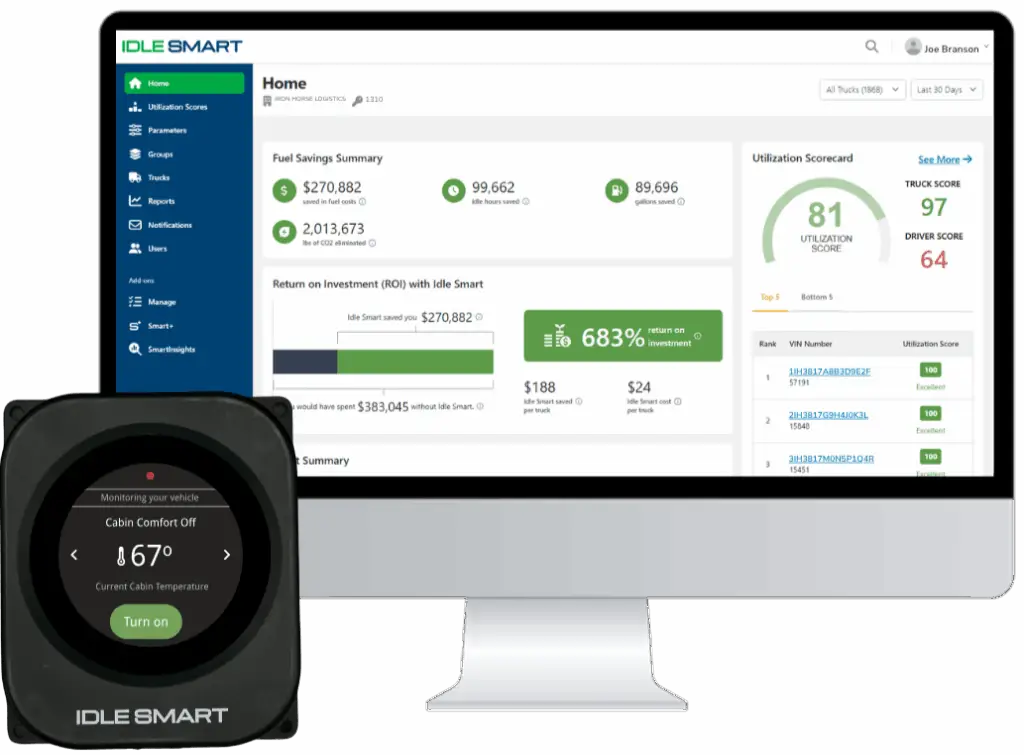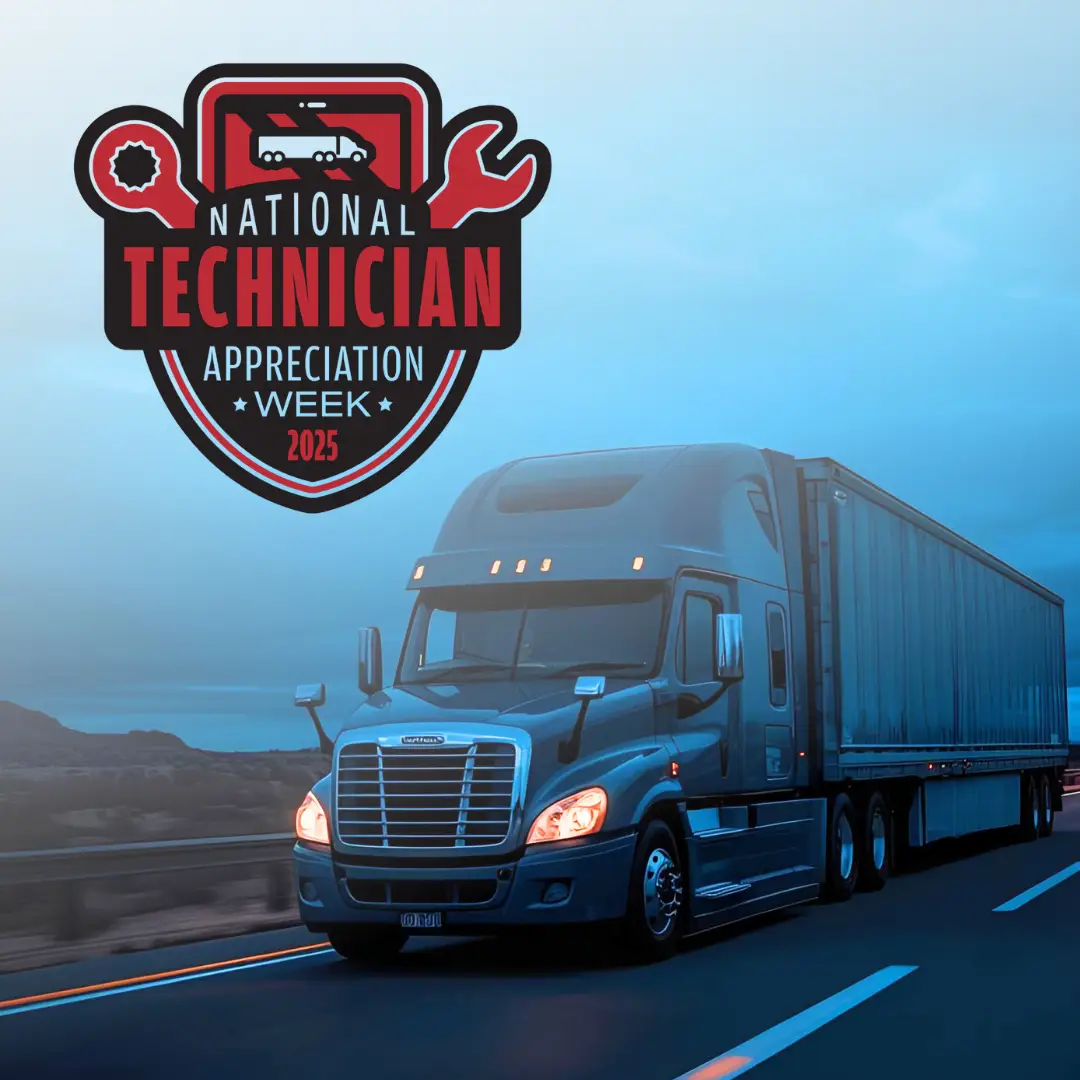
National Technician Appreciation Week (NTAW) 2025 is our chance to celebrate the maintenance heroes of the trucking industry—the professionals who keep our nation’s commerce moving. Their work, from diagnosing complex engine issues to performing routine maintenance, is more demanding and technical than ever. Honored by the American Trucking Associations’ Technology & Maintenance Council (TMC), NTAW recognizes that technicians are the vital force behind every successful fleet. This blog post looks at five ways modern technology is evolving to support their expertise, making their job easier, more efficient, and less stressful.
1. AI-Powered Predictive Diagnostics
Diagnosing a problem on a modern Class 8 truck can feel like sifting through a mountain of digital information. The Engine Control Module (ECM) generates countless fault codes, many of which are non-critical, making it a challenge to find the real issue. Many modern technologies are helping technicians by getting ahead of mechanical problems before they cause breakdowns.
Platforms from companies like Uptake and Geotab use machine learning to analyze telematics and sensor data from thousands of vehicles. Instead of just giving a raw fault code, these systems can identify patterns that suggest a specific part or system is likely to fail. Taking it a step further, predictive maintenance tools like SmartInsights provide prioritized Insights with actionable recommendations, cutting down on diagnostic time and allowing technicians to focus their skills on actual repairs, not the investigation.
Modern fleet tech is focused on not just making repairs efficiently, but preventing unexpected repairs in the first place.
2. Digital Workflows and Integrated Platforms
Gone are the days of lost paperwork and handwritten notes. Digital fleet management software is now the standard for streamlining maintenance workflows. Companies like Fleetio and Trimble offer platforms that centralize everything from digital vehicle inspection reports to work orders and parts inventory. A driver can submit an inspection report with a few taps on a mobile app, often with photos, and that information instantly creates a work order for the technician. This ensures the technician has a clear, organized view of the problem before the truck ever pulls into the bay.
Idle Smart’s SmartPortal similarly gathers your entire fleet’s idle data in one convenient platform, regardless of OEM. Across all types of technology, advancements have enabled seamless communication and data reporting, reducing diagnostic time and keeping your trucks on the road.
3. Enhanced Visualization with AR/VR
As trucks become more complex, augmented and virtual reality (AR/VR) are emerging as powerful tools for technicians. AR can overlay digital instructions, diagrams, or 3D models directly onto the physical engine or chassis when a technician is wearing a headset or holding a tablet. This provides a kind of “x-ray vision” to visualize schematics or internal components, which can dramatically speed up the diagnostic process. This technology also enables remote assistance, allowing a senior technician to guide a less experienced team member through a repair from a different location, a valuable resource given the technician shortage. While AR and VR are still slowly being adopted, it could be a game-changer for training and retention.
4. Remote Adjustments
A major pain point for fleets with trucks from multiple different OEMs is inconsistency in settings and the need for seasonal adjustments, which must be made in the shop.
Systems like Idle Smart help fleets minimize the friction of having a mixed-asset fleet by standardizing parameters and settings regardless of OEM, and making parameter adjustments remotely accessible. That means, instead of bringing in one truck at a time for a shop visit to tweak parameters, a technician or fleet manager can adjust your entire fleet’s parameters instantly, right from their desk. Some advanced features even change settings based on each truck’s location and weather conditions, minimizing the need for adjustments altogether.
Remote adjustments are a huge win, especially for large fleets with hundreds or thousands of trucks, as they keep trucks on the road, reduce unnecessary shop visits, and ensure that the entire fleet operates with the same set of rules, regardless of the make or model.
5. Automation and Maintenance-Free Solutions
The most effective technology for a technician is a system designed to reduce the maintenance burden and help them use their time more efficiently. Older technology, like traditional APUs, requires regular maintenance, adding more tasks to a technician’s already busy schedule.
That’s why many fleets are considering maintenance-free technologies. An APU alternative like Idle Smart, for example, automates idle management to prevent no-starts and minimize engine wear without requiring maintenance of its own. When combined with a smarter approach to automation, these systems can lessen the overall workload and help technicians do their jobs more efficiently. Automation isn’t just for assembly lines; with the right technology, it creates systems that work for technicians, not against them, allowing them to focus their expertise on the most critical repairs.
A Smarter Future, Built on Trust
During NTAW 2025, we celebrate the evolution of the technician’s trade. The professionals who keep our industry moving are now more critical than ever, and modern technology is giving them the tools they need to excel. Equipping your team with technology designed to make their work easier and more efficient isn’t just an investment in efficiency; it’s a way of saying, “Thank you for all you do, and we’re giving you the tech to prove it.”
Idle Smart is a system built with this philosophy in mind. By offering a maintenance-free solution designed to eliminate unplanned breakdowns and enhance efficiency, we help technicians shine. It’s technology that’s ready to support the men and women who keep our industry moving.

To learn more about how Idle Smart helps your technicians, talk to our team today.
